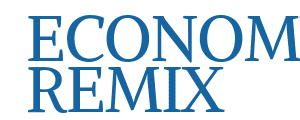
This fall, public colleges in Indiana are gearing up to eliminate or restructure dozens of teacher education programs with low enrollments, in efforts to comply with a recent state law. Indiana’s schools amplify a stark nationwide reality: Teaching children remains an unpopular career option for young people, fueling the United States’ profound teacher shortage crisis.
The change in Indiana comes with the state’s latest budget bill, House Enrolled Act 1001, which requires that if academic degree programs do not produce a minimum number of graduates over a three-year period, they will face termination. Colleges can still seek the Indiana Commission for Higher Education’s approval to continue specific degree programs, even if they do not meet the threshold.
Before the quota took effect on July 1, six academic institutions “voluntarily” committed to eliminate, suspend, or consolidate over 400 under-threshold programs. The affected programs range a variety of academic degree types and disciplines, from foreign languages to engineering.
Currently enrolled and incoming students in the over 100 programs slated for suspension can still complete their degrees as their schools prepare for complete elimination. Among the 75 programs that were immediately eliminated this summer, 19 of them were teacher education degrees—indicating that they hosted zero enrolled students heading into the 2025–26 academic year.
In a statement, Indiana Governor Mike Braun said that the cuts and consolidations will better prepare students for careers “in the most in-demand fields of today and the future” and will “increase the value of higher education.”
“This will help students make more informed decisions about the degree they want to pursue and ensure there is a direct connection between the skills students are gaining through higher education and the skills they need most,” Braun said.
In total, about 32 teacher education degrees are slated to be eliminated or suspended, and about 48 teacher education degrees will be consolidated.
As Indiana and other states, including Ohio and Utah, push higher education institutions to slash programs based on numbers of graduates, some faculty have criticized the move, arguing that enrollment is not the sole determinate of an academic degree’s worth.
Teachers hold an undoubtedly vital role in the United States, but that does not change the plunging career interest in the field over the past several decades. Indiana’s public colleges show how one state is reacting to the teacher shortage crisis, during a time when federal support for education is particularly strained.
Indiana University’s Response
In response to the legislation, the Indiana University (IU) system committed to immediately eliminate 13 teacher education degrees and consolidate 30 teacher education degrees ahead of the 2026–27 academic year. Mark Sperling, interim dean of the School of Education at IU Northwest, explained in an interview with NPQ how the IU system plans to merge these programs.
“With the pressures economically at the federal level and state level, it’s gotten harder and harder for students to go into teaching.”
Sperling said that all the regional IU campuses are collectively creating a new, generalized program in “secondary education,” which typically encompasses material taught in middle and high school. He said that secondary education students will likely take courses both in-person and online, so that professors from any IU campus can virtually teach students based at other campuses, thus maximizing the university system’s resources.
Currently, IU education students are separated into programs specific to their subject of interest, such as English education or biology education. Sperling said that in the new joint program, a student will instead earn a degree in secondary education with a concentration in a specific discipline. That way, more students can count toward one broad program that meets the state-designated threshold.
Sperling added that education school deans and professors are collaborating to design the new curriculum, which the IU system is required to finalize by December.
“We really didn’t want to hurt students and cut out the programs completely,” Sperling told NPQ. “We understand that the state legislature and the Indiana Commission of Higher Ed wanted to limit some programs, and unfortunately, education today doesn’t draw as many students as it once did. With the pressures economically at the federal level and state level, it’s gotten harder and harder for students to go into teaching.”
Teacher Shortages
Currently, interest in the teaching profession among students has sunk to its lowest level in several decades. At least one in eight teaching positions across the country either remains unfilled or lacks a certified educator, according to recent analysis from the Learning Policy Institute.
Sperling said that students’ reluctance to become teachers does not stem from a lack of interest in the work itself, but rather from dissatisfaction with the field’s financial prospects. Although teachers’ starting salary has increased in recent years, when adjusted for inflation, their average salary is now 5 percent less than it was 10 years ago. In some states, including Indiana, the average teacher salary even fails to meet the state’s minimum living wage for a small family.
“People look at the salaries and say, ‘Private industry offers a lot more’—which is not untrue, because schools are really dependent on taxes and state assistance, and that’s not always available in every state,” Sperling said. “That’s been a challenge. That’s always been a challenge.”
Interest in the teaching profession among students has sunk to its lowest level in several decades.
Teacher shortages force school districts to adopt larger class sizes and burden educators with increased responsibilities, contributing to high turnover rates as teachers experience burnout and often leave the field within just a few years.
What’s more, the crisis also disproportionately impacts low-income students and students of color. Schools serving high proportions of students from marginalized groups are far more likely to face staffing issues, forcing them to employ uncertified educators and reduce extracurricular and academic opportunities for students.
“We have an opportunity to reimagine how we talk about education and how we share the benefits and the cool things about education. Let’s make teaching appealing again.”
How Nonprofits Can Address the Teacher Shortage Crisis
High school and college students will likely not feel encouraged to pursue education as they see large institutions devaluing teaching as a vocation, including public colleges scrapping numerous teacher education degrees. However, nonprofits hold the power to draw people’s attention to the teacher shortage at their children’s schools, and harness community influence toward creating change.
For example, RISE INDY, an Indianapolis-based nonprofit focused on improving student outcomes amid gaps in the education system, surveyed over 500 public school teachers and found that educators wanted more support from parents. In response, the nonprofit created its Freedom Readers Fellowship to train parents and community members to work with students struggling with literacy. Jasmine Jackson, RISE INDY’s chief of staff, said that through the nonprofit’s partnership with Marion University, fellows can learn the same curriculum as certified teachers.
“Without teachers and parents that are well-equipped to focus on the learning of kids and the progress of student learning, we don’t have a strong education system,” Jackson told NPQ in an interview. “Educators have been stretched thin. There are lots of requirements. There’s lots of changes in our education system, and teachers are having to do more than just teach.”
The fellowship introduces a new way for people to become certified educators, even if they have alternate careers or are not in college. Especially now as universities are slashing their teacher education degrees, finding alternative pipelines to the profession could be a critical method to continue fighting the shortage.
Jackson and Duane Ingram, RISE INDY’s vice president of community affairs, described the nonprofit’s efforts to inspire K–12 students’ interest in becoming educators themselves by explaining the importance of teachers and what it takes to become one.
“It’s hard to get [someone] interested in going in the classroom if you keep telling them, ‘You’re not going to make a lot of money, your classrooms are going to be big, you’re going to be stressed out,’” Ingram said. “Oftentimes, others just choose other career paths. We have an opportunity to reimagine how we talk about education and how we share the benefits and the cool things about education. Let’s make teaching appealing again.”
Sperling from IU also discussed how aside from the unsustainable salaries and challenging working conditions, the political rhetoric around education could be influencing the profession’s devaluation in the public eye.
President Donald Trump has taken several steps toward his goal of dismantling the Department of Education. Many of his administration’s actions have had direct consequences on teachers’ employment. For example, the US Supreme Court permitted the Trump administration to terminate around $65 million in teacher training grants aimed at addressing the teacher shortage crisis. The grants were part of two programs—the Teacher Quality Partnership (TQP) and the Supporting Effective Educator Development (SEED) program—that intended to support quality professional development for prospective and current educators.
Sperling said it would be helpful for federal and state governments to highlight the importance of education and the monumental role that educators play, amid both the currently tense political climate and the dangerous teacher shortage crisis worsening in the background.
“I’ve had a great career in teaching, and have I made a million dollars? No, never,” Sperling said. “But I have the satisfaction of knowing I helped a lot of students. To me, that’s really what teaching is about—helping students to be successful.”
For More on This Topic:
Universities Capitulate to Trump Administration’s Demands—But at What Cost?
Educators ‘Lack Confidence’ to Teach Climate Change—What’s Being Done at the Policy Level?
University Professors Are Latest Targets of FOIA Requests














